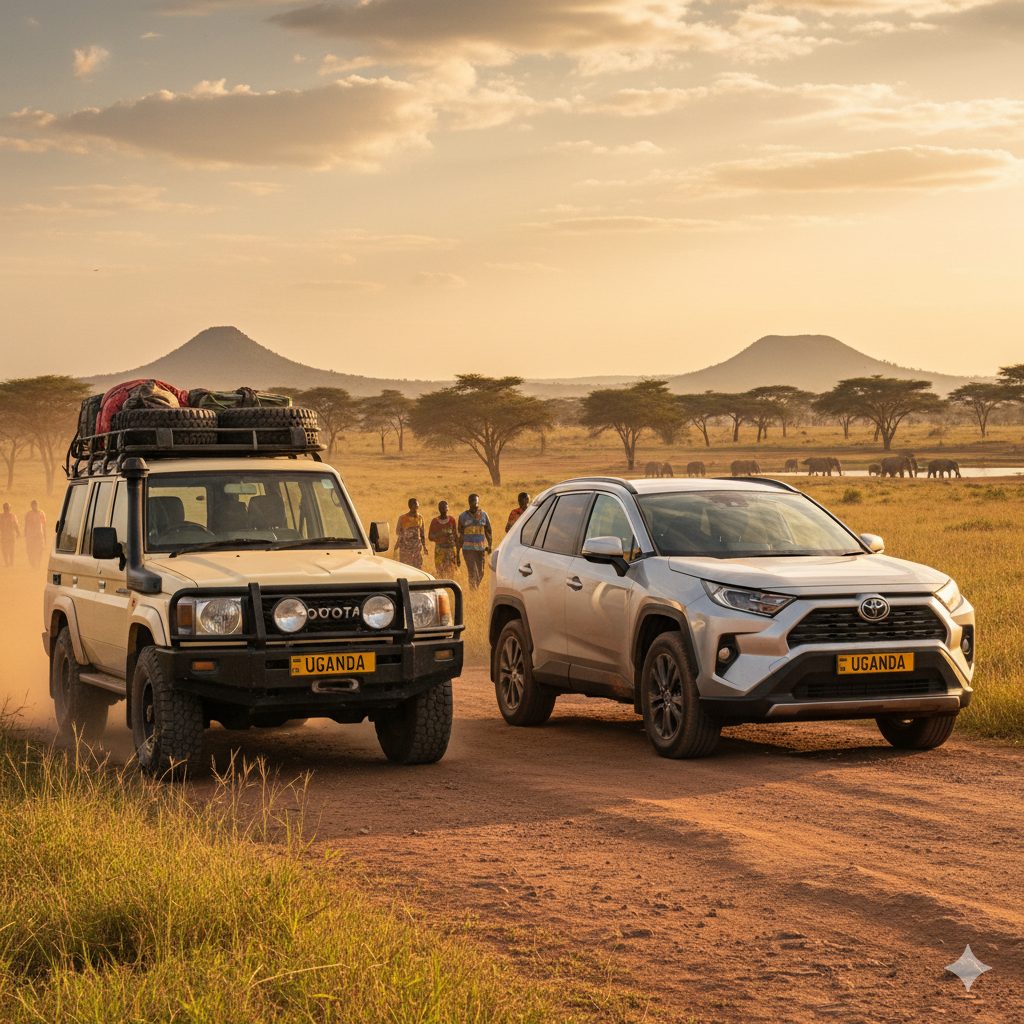Uganda offers some of the world's most amazing wildlife experiences, breathtaking landscapes, and rich cultural…
All You Need To Know About 4×4 Car Categories & Types

Four-wheel drive, commonly known as 4WD or 4×4, refers to a vehicle drivetrain system where the engine powers all four wheels simultaneously. This setup contrasts with the more typical two-wheel drive vehicles, where only two wheels receive engine power. The 4×4 system enhances traction and control, making these vehicles particularly suited for off-road driving and challenging road conditions such as snow, mud, or rough terrain.
Categories of 4×4 Systems
4×4 vehicles come in several categories based on how the power is distributed to the wheels and how the system operates. The main types include:

1. Part-Time 4WD
Part-time 4WD systems allow the driver to switch between two-wheel drive and four-wheel drive modes, either mechanically or electronically. When engaged, power is sent equally to both front and rear axles, typically without a center differential. This system is ideal for off-road use but should not be used on dry pavement to avoid drivetrain damage. Vehicles with part-time 4WD often have higher ground clearance and may include locking hubs to improve fuel efficiency when 4WD is disengaged.
2. Full-Time 4WD
Full-time 4WD vehicles continuously send power to all four wheels. These systems usually include a center differential that allows the front and rear wheels to rotate at different speeds, improving drivability on all surfaces. Full-time 4WD is designed for serious off-roading and often features locking differentials to prevent wheel slip. However, these systems tend to be heavier and less fuel-efficient.
3. All-Wheel Drive (AWD)
Though often confused with 4WD, AWD systems are distinct. AWD uses a center differential or an electronic system to distribute power to all wheels automatically, depending on traction conditions. Unlike traditional 4WD, AWD is designed primarily for on-road use, enhancing grip in rain, snow, or light off-road conditions. AWD systems are common in unibody crossovers and cars and generally provide better fuel economy and smoother operation on paved roads.
4. Part-Time AWD
Part-time AWD systems operate primarily as front-wheel drive but automatically send power to the rear wheels when traction is lost. This system is lighter and less complex than full AWD or 4WD, making it popular in compact vehicles. It lacks a low-range transfer case and is not intended for serious off-roading but offers improved traction in everyday driving conditions.
Types of 4×4 Vehicles
 4×4 systems are implemented in various vehicle types, each designed with specific capabilities:
4×4 systems are implemented in various vehicle types, each designed with specific capabilities:
-
4×4 SUVs: These vehicles balance on-road comfort with off-road capability. They often feature switchable 4WD systems, electronic stability control, and traction aids.
-
4×4 Pickup Trucks: Known for their towing and payload capacity, these trucks have robust body-on-frame construction, high ground clearance, and locking differentials.
-
Compact 4x4s: Smaller 4×4 vehicles offer basic off-road capability with a focus on maneuverability and efficiency.
Conclusion
Four-wheel drive systems offer varying degrees of off-road and traction capability, tailored to different driving needs. Part-time and full-time 4WD systems are favored for serious off-roading, while AWD and part-time AWD provide enhanced traction for everyday driving in adverse conditions. Choosing the right 4×4 category depends on the intended use, balancing performance, fuel efficiency, and vehicle complexity.
Are you planning to book a 4×4 rental car in Uganda for your next safari or business trip, simply contact us now by sending an email to info@rent4x4caruganda.com or calling us on +256-700135510 to speak with us now.



